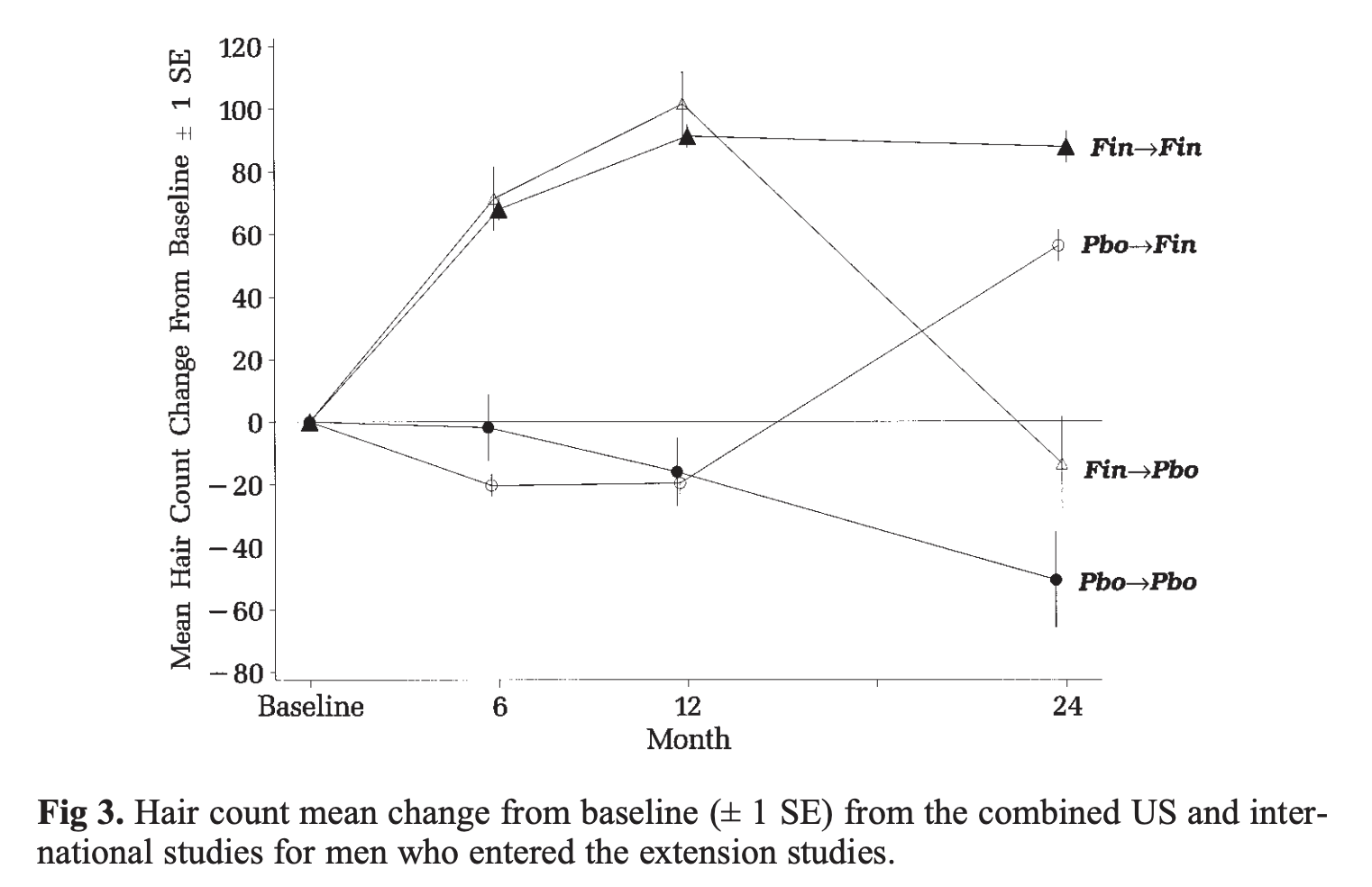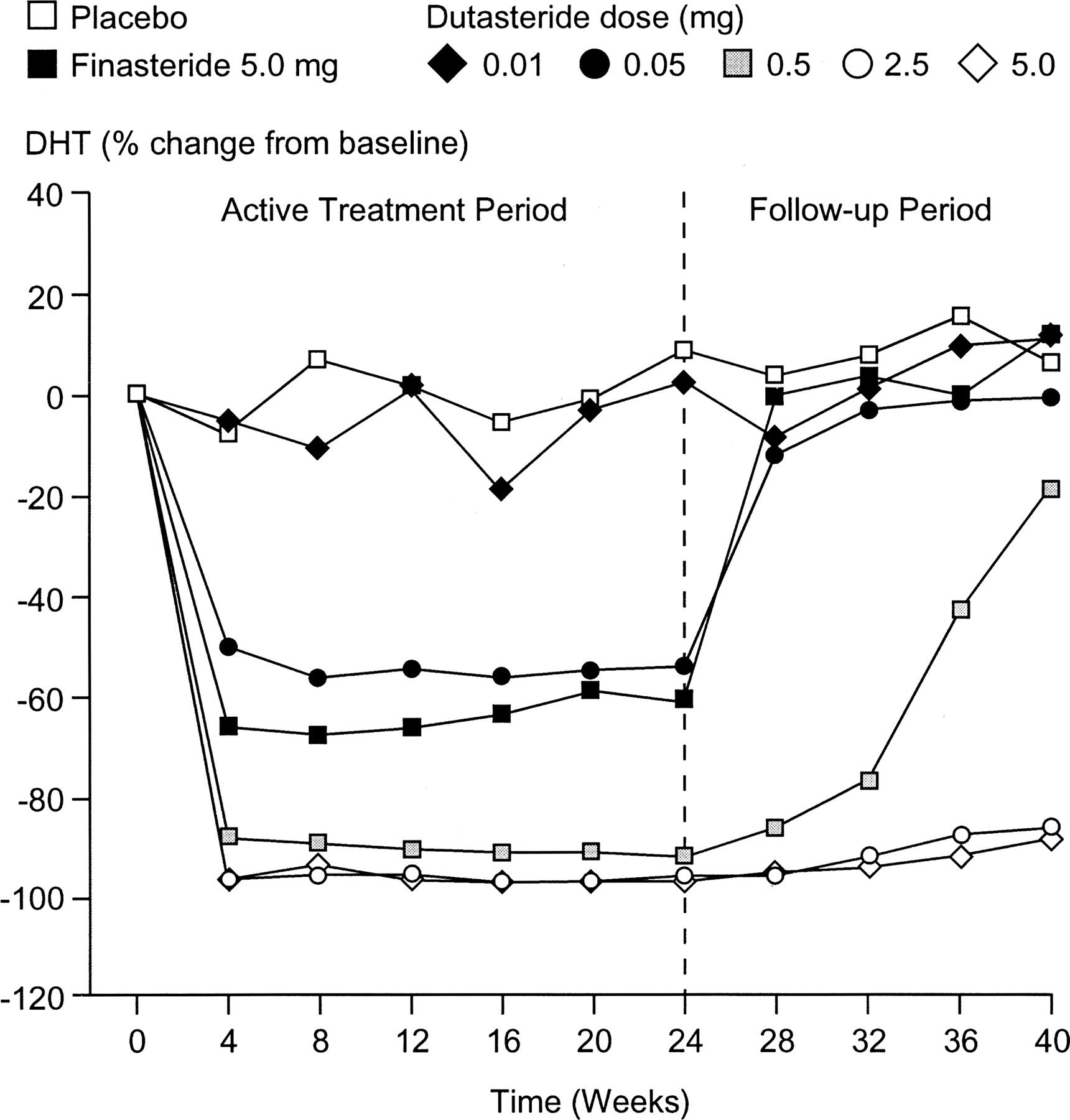- About
- Mission Statement
Education. Evidence. Regrowth.
- Education.
Prioritize knowledge. Make better choices.
- Evidence.
Sort good studies from the bad.
- Regrowth.
Get bigger hair gains.
Team MembersPhD's, resarchers, & consumer advocates.
- Rob English
Founder, researcher, & consumer advocate
- Research Team
Our team of PhD’s, researchers, & more
Editorial PolicyDiscover how we conduct our research.
ContactHave questions? Contact us.
Before-Afters- Transformation Photos
Our library of before-after photos.
- — Jenna, 31, U.S.A.
I have attached my before and afters of my progress since joining this group...
- — Tom, 30, U.K.
I’m convinced I’ve recovered to probably the hairline I had 3 years ago. Super stoked…
- — Rabih, 30’s, U.S.A.
My friends actually told me, “Your hairline improved. Your hair looks thicker...
- — RDB, 35, New York, U.S.A.
I also feel my hair has a different texture to it now…
- — Aayush, 20’s, Boston, MA
Firstly thank you for your work in this field. I am immensely grateful that...
- — Ben M., U.S.A
I just wanted to thank you for all your research, for introducing me to this method...
- — Raul, 50, Spain
To be honest I am having fun with all this and I still don’t know how much...
- — Lisa, 52, U.S.
I see a massive amount of regrowth that is all less than about 8 cm long...
Client Testimonials150+ member experiences.
Scroll Down
Popular Treatments- Treatments
Popular treatments. But do they work?
- Finasteride
- Oral
- Topical
- Dutasteride
- Oral
- Topical
- Mesotherapy
- Minoxidil
- Oral
- Topical
- Ketoconazole
- Shampoo
- Topical
- Low-Level Laser Therapy
- Therapy
- Microneedling
- Therapy
- Platelet-Rich Plasma Therapy (PRP)
- Therapy
- Scalp Massages
- Therapy
More
IngredientsTop-selling ingredients, quantified.
- Saw Palmetto
- Redensyl
- Melatonin
- Caffeine
- Biotin
- Rosemary Oil
- Lilac Stem Cells
- Hydrolyzed Wheat Protein
- Sodium Lauryl Sulfate
More
ProductsThe truth about hair loss "best sellers".
- Minoxidil Tablets
Xyon Health
- Finasteride
Strut Health
- Hair Growth Supplements
Happy Head
- REVITA Tablets for Hair Growth Support
DS Laboratories
- FoliGROWTH Ultimate Hair Neutraceutical
Advanced Trichology
- Enhance Hair Density Serum
Fully Vital
- Topical Finasteride and Minoxidil
Xyon Health
- HairOmega Foaming Hair Growth Serum
DrFormulas
- Bio-Cleansing Shampoo
Revivogen MD
more
Key MetricsStandardized rubrics to evaluate all treatments.
- Evidence Quality
Is this treatment well studied?
- Regrowth Potential
How much regrowth can you expect?
- Long-Term Viability
Is this treatment safe & sustainable?
Free Research- Free Resources
Apps, tools, guides, freebies, & more.
- Free CalculatorTopical Finasteride Calculator
- Free Interactive GuideInteractive Guide: What Causes Hair Loss?
- Free ResourceFree Guide: Standardized Scalp Massages
- Free Course7-Day Hair Loss Email Course
- Free DatabaseIngredients Database
- Free Interactive GuideInteractive Guide: Hair Loss Disorders
- Free DatabaseTreatment Guides
- Free Lab TestsProduct Lab Tests: Purity & Potency
- Free Video & Write-upEvidence Quality Masterclass
- Free Interactive GuideDermatology Appointment Guide
More
Articles100+ free articles.
-
Blueprint Haircare Stack: Product Review
-
Best Minoxidil for Men: Top Picks for 2025
-
Natural vs. Pharmaceutical DHT Blockers: Ranked
-
Oral Dutasteride for Hair Loss: Results, Side Effects, Dosing & How It Compares to Finasteride
-
Topical & Mesotherapy Dutasteride for Hair Loss: Evidence, Dosing, Safety
-
Oral Finasteride Before and After: Real Case Studies
-
Does Topical Finasteride Work?
-
Women: Is Topical Minoxidil Safe While Trying to Conceive?
PublicationsOur team’s peer-reviewed studies.
- Microneedling and Its Use in Hair Loss Disorders: A Systematic Review
- Use of Botulinum Toxin for Androgenic Alopecia: A Systematic Review
- Conflicting Reports Regarding the Histopathological Features of Androgenic Alopecia
- Self-Assessments of Standardized Scalp Massages for Androgenic Alopecia: Survey Results
- A Hypothetical Pathogenesis Model For Androgenic Alopecia:Clarifying The Dihydrotestosterone Paradox And Rate-Limiting Recovery Factors
Menu- AboutAbout
- Mission Statement
Education. Evidence. Regrowth.
- Team Members
PhD's, resarchers, & consumer advocates.
- Editorial Policy
Discover how we conduct our research.
- Contact
Have questions? Contact us.
- Before-Afters
Before-Afters- Transformation Photos
Our library of before-after photos.
- Client Testimonials
Read the experiences of members
Before-Afters/ Client Testimonials- Popular Treatments
-
ArticlesWhat Happens If I Stop Using Finasteride?
First Published Feb 26 2024Last Updated Sep 19 2025Pharmaceutical Researched & Written By:Perfect Hair Health Team
Researched & Written By:Perfect Hair Health Team Reviewed By:Rob English, Medical Editor
Reviewed By:Rob English, Medical Editor
Want help with your hair regrowth journey?
Get personalized support, product recommendations, video calls, and more from our researchers, trichologists, and PhD's dedicated to getting you the best possible outcomes.
Learn MoreArticle Summary
After quitting finasteride, two-year clinical studies suggest that hair loss resumes 1-3 months after withdrawal. Within 3-12 months of quitting, hair counts return to where they were prior to starting the drug, and hair loss continues. But what about those who quit finasteride temporarily? What about those who quit finasteride, but replace it with other hair loss treatments and/or therapies? Under these circumstances, can hair gains from finasteride be maintained? This article explores the science.
Full Article
Finasteride is an FDA-approved medication for androgenic hair loss in men. Clinical studies suggest that 1 mg daily of finasteride can improve hair loss in 80-90% of men with androgenic alopecia (AGA) – with 5- and 10-year studies demonstrating hair maintenance in a large portion of users who continue treatment.
As such, many consider finasteride to be the gold-standard medical therapy for AGA.
But what happens when someone stops using finasteride? How long are hair gains preserved? When does hair loss resume? And can someone quit finasteride, but keep their hair gains by replacing finasteride with other treatments and/or therapies?
This article explores some of the studies attempting to answer these questions.[1]https://pubmed.ncbi.nlm.nih.gov/9777765/[2]https://pubmed.ncbi.nlm.nih.gov/11809594/[3]https://www.oatext.com/Long-term-(10-year)-efficacy-of-finasteride-in-523-Japanese-men-with-androgenetic-alopecia.php
Interested in Oral Finasteride?
Oral finasteride & minoxidil available, if prescribed*
Take the next step in your hair regrowth journey. Get started today with a provider who can prescribe a topical solution tailored for you.
*Only available in the U.S. Prescriptions not guaranteed. Restrictions apply. Off-label products are not endorsed by the FDA.

What Happens If I Stop Using Finasteride?
Package inserts for the drug Propecia® (brandname finasteride) suggest that within 3-12 months of quitting finasteride, hair loss resumes and hair counts return to where they were prior to starting the drug.
But what’s the basis for this statement? In other words, where’s the scientific support?
The evidence actually comes from the original Phase II and Phase III clinical trials that granted finasteride FDA-approval for the treatment of androgenic alopecia.[4]https://pubmed.ncbi.nlm.nih.gov/9777765/
In a subset of finasteride users, participants were given the drug for a full year, then unknowingly switched into the placebo (i.e., sugar pill) group for the second year (i.e., months 12-24).
The investigators then charted these participants’ hair count changes from months 0-24, and compared those changes to those who continued using finasteride and those who were always receiving the placebo pill.
The results: unknowingly quitting finasteride led to a return to month 0 hair counts (actually, slightly below baseline) after 12 months of discontinuance. Just see the following chart. The group labeled Fin→Pbo is the group who took finasteride for year one, and a placebo pill for year two.
Kaufman KD, Olsen EA, Whiting D, Savin R, DeVillez R, Bergfeld W, Price VH, Van Neste D, Roberts JL, Hordinsky M, Shapiro J, Binkowitz B, Gormley GJ. Finasteride in the treatment of men with androgenetic alopecia. Finasteride Male Pattern Hair Loss Study Group. J Am Acad Dermatol. 1998 Oct;39(4 Pt 1):578-89. doi: 10.1016/s0190-9622(98)70007-6. PMID: 9777765.
This chart provides the scientific backing for the claims made within the Propecia® package insert. It’s also the reason why manufacturers of finasteride state that the drug must be used for a lifetime in order to maintain any of the hair gained and/or preserved by the drug.
What If I Stop Taking Finasteride Temporarily?
Under some circumstances, it is possible to stop taking finasteride temporarily, and without losing much (or any) hair. This is because there is a delay between the time at which finasteride is discontinued and when hair loss resumes.
The reason for this delay is because of the way finasteride behaves in the body – i.e., the drug’s pharmacokinetics. More specifically, finasteride’s metabolism and timing of effects on the body depend on factors such as its:
- Terminal half-life
- Biological half-life
- Tissue dissociation timings
For a deep-dive into these topics, see these articles.
- Finasteride: How Long Does It Stay In The Bloodstream?
- Finasteride: How Long Does It Stay Active In Scalp Tissue?
Otherwise, here are the key takeaways:
1. Finasteride’s biological effects can last up to 30 days after quitting
Due to finasteride’s terminal half-life of 5-7 hours and tissue dissociation timing of 4-5 days, the drug can actually exert biological effects on hormone profiles even up to ~30 days after quitting.
That means that finasteride can continue to therapeutically lower scalp levels of dihydrotestosterone (DHT), even for weeks after quitting the medication.
Just see this chart, which shows that even after men quit using finasteride, it still took several weeks before their serum DHT levels returned to baseline.[5]https://academic.oup.com/jcem/article/89/5/2179/2844345
Richard V. Clark, David J. Hermann, Glenn R. Cunningham, Timothy H. Wilson, Betsy B. Morrill, Stuart Hobbs, Marked Suppression of Dihydrotestosterone in Men with Benign Prostatic Hyperplasia by Dutasteride, a Dual 5α-Reductase Inhibitor, The Journal of Clinical Endocrinology & Metabolism, Volume 89, Issue 5, 1 May 2004, Pages 2179–2184
(Note: these relationships assume that finasteride reachced full tissue distribution and a steady-state plasma level commensurate with 1-5 mg of daily use over a number of weeks. For those who only took finasteride a handful of times, the drug’s effects may only take a matter of days to reverse).
2. Users can take advantage of the pharmacokinetics of finasteride to reduce drug exposure and still preserve their hair gains
Finasteride is FDA-approved for androgenic alopecia at 1 mg daily doses. However, given the pharmacokinetics of the drug, some researchers have wondered if daily dosing is necessary.
One investigation group decided to explore this by putting a group of men on 1 mg of finasteride daily for a year. But for year two, they randomized the men into two groups: one group who would continue taking finasteride every day, and the other group who would start a 30 days-on, 30 days-off dosing approach.
The researchers found that both groups achieved comparable hair parameter improvements in year two – even despite the second group only technically using finasteride for half the time (i.e., a total of 6 months versus 12 months).[6]https://jaad.org/retrieve/pii/S0190962220319289
The hypothesis: that finasteride’s pharmacokinetics allow for dosing schedules that alternate month-to-month. For those wanting to lower their drug exposure or simply “take breaks” from the medication – for any reason – this type of dosing might allow for this to happen without sacrificing much (or any) hair gains.
What If I Stop Finasteride For Longer Than One Month?
Say you’re troubleshooting side effects, or trying to conceive, and you decide to pause your use of finasteride for longer than one month.
Under these circumstances, there is a higher likelihood of hair loss resuming versus the 30-day withdrawal window. We see this reflected clinically in the withdrawal studies on finasteride, as well as anecdotally amongst members of our membership community.
This is because after 30 days of withdrawal, the effects of finasteride on scalp DHT levels have mostly worn off. This means that scalp DHT levels return to baseline, and under these circumstances, hair loss will eventually resume.
However, for many people, the resumption of hair loss doesn’t happen immediately. While there aren’t any studies of which we’re aware that track finasteride withdrawal versus hair count changes on a month-by-month basis, we have communicated with many finasteride users who’ve consistently reported, after quitting, that hair shedding and hair loss didn’t seem to pick back up again until months 2, 3, and beyond.
Even still, if you’re considering pausing finasteride use for any reason, try to keep the window of time beyond 30 days to a minimum. In doing so, you’ll put yourself in the best possible position for drug-related hair maintenance.
What If I Quit Finasteride And Replace It With Other Treatments?
We get this question all the time, and unfortunately, there’s no good clinical data to answer this question.
Scientifically speaking, finasteride’s mechanism of action is that it suppresses scalp DHT levels low enough to allow for hair cycle normalization and the partial reversal of hair follicle miniaturization. This typically occurs only at therapeutic levels of DHT reduction, which according to clinical studies for hair regrowth, seem to require lowering scalp DHT by 60-70%.
If someone quits finasteride and replaces the drug with other treatments, the preservation of any hair gains from finasteride will, for the most part, directly depend on the ability for those “replacement treatments” to suppress DHT levels to the same degree of finasteride.
For better or for worse, finasteride is one of the best tools we have to therapeutically and safely suppress scalp DHT levels enough to generate long-lasting hair growth – even despite its risk of side effects, which seem to affect 5-15% of users trying the drug.
Therefore, for anyone considering quitting finasteride, the most important question is to understand why. Then, we can create a roadmap or action plan based on that answer. For example:
- If quitting finasteride (as a male) to start to conceive: this can be done temporarily, and without a high risk of hair loss provided that you can conceive after month one of quitting but before month three of discontinuance.
- If quitting finasteride due to side effects: there’s a good chance that those side effects can be managed or eliminated with dose titration strategies, and/or the use of topical finasteride.
- If quitting finasteride because you want to try a natural approach to treating hair loss: we recommend first adding in a natural approach alongside finasteride use, rather than quitting finasteride abruptly.
- If quitting finasteride because you no longer want to use drugs to treat hair loss: we recommend watching this video to ensure your decision isn’t rooted in cognitive dissonance or misinformation.
If quitting finasteride for any other reason, please note that there are no studies exploring outcomes for men or women who withdraw from finasteride and replace the drug with other treatments.
Having said that, the totality of evidence strongly suggests that this is not necessarily a good gamble to make – as finasteride tends to suppress DHT levels in the scalp by a far larger margin (and for a far longer time period) than natural extracts such as saw palmetto. So, your expectation should be that hair loss, in all likelihood, will slowly resume.
Even still, we have seen success stories of people transitioning off finasteride and maintaining their hair gains. While this isn’t an approach we recommend unless absolutely necessary, here are the commonalities amongst people who’ve reported success with this:
- They multi-target their hair loss. In other words, they replace finasteride use with an array of supplements, topicals, and stimulation-based interventions that target their hair loss from multiple angles: DHT reduction, growth stimulation, angiogenesis, and more.
- They don’t immediately withdraw from finasteride. Instead, they add in all replacement interventions alongside finasteride use – and for at least 9-12 months. This allows for any potential synergies to occur between finasteride use and other therapies. Then, after achieving a new level of hair regrowth, they slowly wean away from finasteride via strategies such as topical finasteride and every-other-month oral dosing followed by titration – until after 3-5 months, they’re no longer using finasteride at all. Under the circumstances where users start noticing more hair fall, they hop back on finasteride until things stabilize. Under the circumstances whereby hair gains are maintained, they continue their drug withdrawal.
To reiterate, this is not something we actively recommend. But for those considering doing this, we recommend the above two strategies to minimize your downside risks.
Want Help With Your Hair Loss?
We offer one-on-one support to hair loss sufferers inside our membership community. This is where you can interact directly with hair loss researchers, access our library of product reviews, use our automated tools to build yourself a personalized regrowth plan, and protect yourself from the overwhelming negativity of most online hair loss forums.
If you’re interested in learning more, you can access our membership community right here.
Otherwise, we hope this article helps you make more informed decisions about your treatment choices.
References[+]
References ↑1, ↑4 https://pubmed.ncbi.nlm.nih.gov/9777765/ ↑2 https://pubmed.ncbi.nlm.nih.gov/11809594/ ↑3 https://www.oatext.com/Long-term-(10-year)-efficacy-of-finasteride-in-523-Japanese-men-with-androgenetic-alopecia.php ↑5 https://academic.oup.com/jcem/article/89/5/2179/2844345 ↑6 https://jaad.org/retrieve/pii/S0190962220319289 Want help with your hair regrowth journey?
Get personalized support, product recommendations, video calls, and more from our researchers, trichologists, and PhD's dedicated to getting you the best possible outcomes.
Learn More
Perfect Hair Health Team
"... Can’t thank @Rob (PHH) and @sanderson17 enough for allowing me to understand a bit what was going on with me and why all these [things were] happening ... "
— RDB, 35, New York, U.S.A."... There is a lot improvement that I am seeing and my scalp feel alive nowadays... Thanks everyone. "
— Aayush, 20’s, Boston, MA"... I can say that my hair volume/thickness is about 30% more than it was when I first started."
— Douglas, 50’s, Montréal, CanadaWant help with your hair regrowth journey?
Get personalized support, product recommendations, video calls, and more from our researchers, trichologists, and PhD's dedicated to getting you the best possible outcomes.
Join Now - Mission Statement
 Scroll Down
Scroll Down







